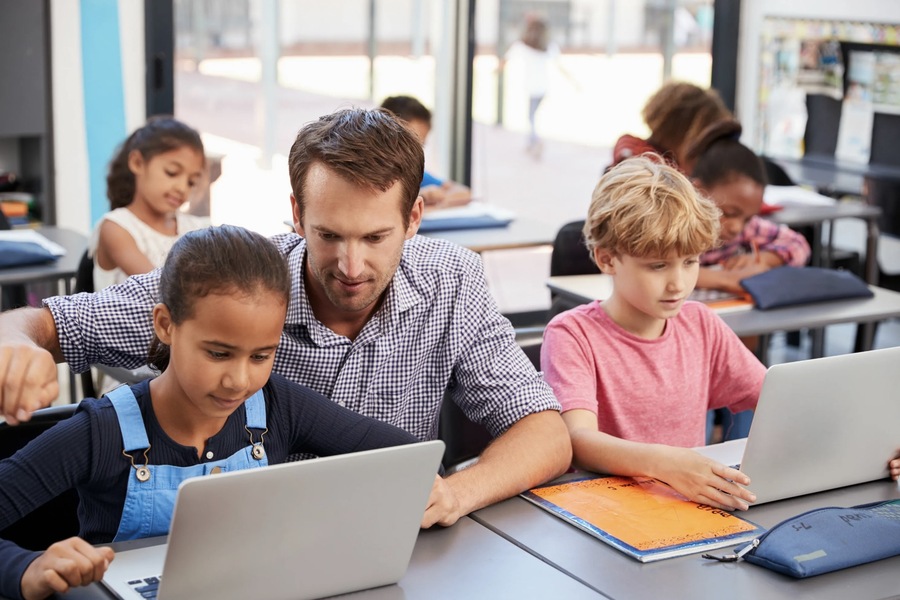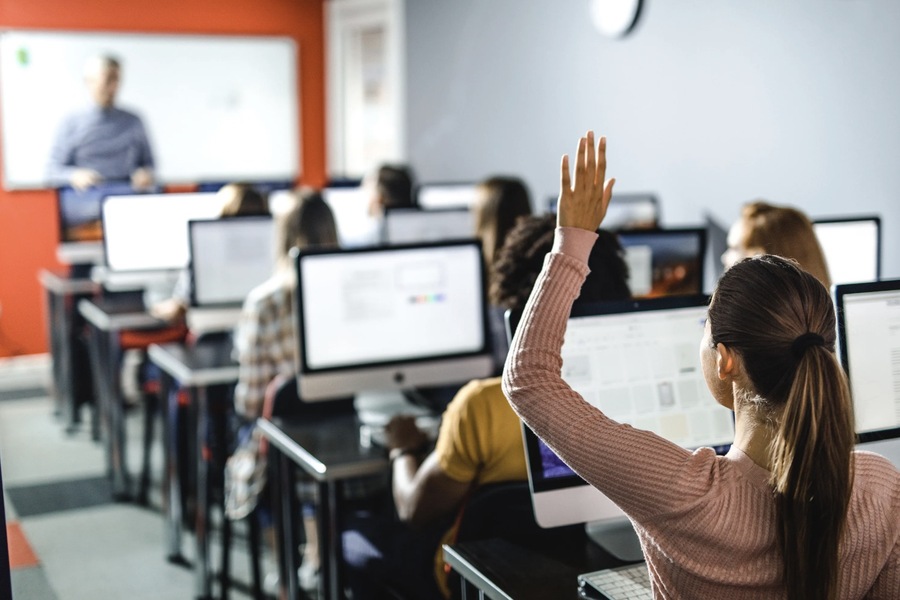
The Role of Technology in Modern Education: A Detailed Exploration
In today’s world, education and technology are intricately intertwined. The digital revolution has significantly transformed the learning process, introducing innovative tools and methods that have reshaped the way students acquire knowledge and interact with their instructors. The integration of technology into education is no longer a luxury, it is essential for providing students with the best possible learning experience. Schools like City American School exemplify this shift, utilizing cutting-edge technology to enhance the educational environment.
Technology has introduced new opportunities for both students and teachers, enhancing personalization, increasing engagement, and broadening access to education. Below, we explore some of the keyways in which technology impacts modern education and how these innovations are changing the landscape of learning.
Personalization of Learning
One of the most transformative effects of technology in education is its ability to offer personalized learning experiences. Through advanced data analytics and artificial intelligence (AI), it is now possible to tailor the educational process to the individual needs of each student. By analyzing student performance, technology can pinpoint strengths and weaknesses, offering personalized recommendations for improvement.
Adaptive learning systems adjust the difficulty and type of exercises based on the student’s progress. For example, a student who excels in math might receive more challenging problems, while another struggling in a particular area may be guided through additional tutorials. These personalized learning paths ensure that each student learns at their own pace and in a way that best suits their individual learning style.
Interactivity and Engagement
Gone are the days of static lectures and textbook-based learning. The rise of multimedia resources, such as videos, animations, simulations, and interactive exercises, has brought a new level of engagement to the classroom. These tools make lessons more dynamic, fostering a deeper understanding of complex concepts and increasing student participation.
Interactive lessons that incorporate video tutorials, educational games, and virtual simulations help students to grasp abstract concepts more easily. For instance, physics simulations can allow students to visualize the principles of motion, while history students can explore ancient civilizations through virtual reality. Such technologies make learning not only more engaging but also more effective, as they stimulate multiple senses, aiding memory retention and comprehension.
Expanding Access to Education
One of the most profound ways that technology has transformed education is by expanding access. Thanks to online learning platforms, education is now available to people who previously had limited access due to geographic, financial, or personal constraints. Virtual classrooms and e-learning platforms break down the traditional barriers of education, making it possible for students from all walks of life to gain a quality education.
This is particularly important for individuals living in remote or rural areas, as well as for those who face physical challenges or are unable to attend traditional schools. Online education allows students to engage with educational content at their convenience, fitting learning into their unique schedules. Furthermore, students can learn from some of the best educators in the world, regardless of their location, and engage with peers from diverse backgrounds, enriching the learning experience.

Innovative Assessment Methods and Feedback
Technology has also revolutionized the way student performance is assessed. Digital tools such as online quizzes, tests, and surveys allow teachers to evaluate their students’ understanding of the material quickly and efficiently. Unlike traditional methods, these tools can provide instant feedback, helping students to identify areas for improvement immediately.
Moreover, technology allows for real-time tracking of student progress. Teachers can easily access data on student performance, analyze trends, and identify gaps in learning. This data-driven approach helps educators to adapt their teaching methods to better meet the needs of their students, offering targeted support where necessary. The ability to assess student understanding continuously rather than at fixed intervals also leads to a more fluid and responsive learning process.
The Impact of Smart Boards and E-Learning Platforms
In the classroom, smart boards and e-learning platforms have had a significant impact on how lessons are conducted. Interactive smart boards allow teachers to present videos, graphs, formulas, and diagrams in real time. With the ability to write, highlight, and correct content on the board, teachers can engage students more effectively by combining visual and auditory learning methods.
Smart boards foster collaboration and active participation, allowing students to take part in problem-solving exercises or group discussions. Teachers can also record lessons and make them available for students to review later, ensuring that no one falls behind.
E-learning platforms and educational apps further support this dynamic learning environment. They provide students with access to a variety of learning materials, from video lessons to quizzes and interactive exercises. These platforms allow students to study at their own pace, ensuring that they grasp concepts thoroughly before moving on to the next topic.
Moreover, the use of e-learning platforms enables students to interact with their peers and instructors, engage in discussions, and receive feedback, creating a sense of community even in virtual learning environments.
Virtual and Augmented Reality in Education
Virtual and augmented reality (VR and AR) are among the latest technological innovations to be integrated into education. VR and AR offer immersive learning experiences, allowing students to explore historical events, natural phenomena, and scientific concepts in ways that were previously unimaginable.
For example, VR can transport students to ancient Rome, where they can virtually walk through the streets and witness historical events unfold. In science, students can use AR to explore the human body in 3D, understanding complex systems in an interactive manner. These technologies not only make learning more exciting but also enhance the understanding of abstract concepts through experiential learning.

City American School: A Leader in Technological Integration
Only the best educational institutions are fully embracing the potential of technology to deliver top-notch education. City American School (CAS) in Ajman stands as a shining example of how technology can be leveraged to create a modern, dynamic learning environment. CAS is considered one of the top American schools in Ajman, known for its commitment to fostering creativity, inclusivity, and strong character development among its students.
At CAS, technology is seamlessly integrated into the curriculum, providing students with access to the latest educational tools. Smart boards, tablets, and e-learning platforms are standard in every classroom, allowing teachers to deliver lessons in a more engaging and interactive format. The school also offers virtual learning options, ensuring that students can continue their education regardless of location or circumstance.
Moreover, CAS is committed to ensuring that every student is prepared for the future, with a strong emphasis on technology skills, critical thinking, and innovation. The school’s state-of-the-art facilities, combined with its forward-thinking approach to education, make it a leader in the use of technology in the classroom.
In terms of affordability, CAS offers competitive tuition rates for its high-quality education. For example, the cost for an eighth-grade student is AED 29,100, which is reasonable given the cutting-edge technology and resources available to students.
Conclusion
The integration of technology in education is more than just a trend—it is a necessary evolution that enhances the learning experience for students and educators alike. From personalized learning to virtual reality, technology offers new and exciting ways to engage with educational content, making learning more accessible, interactive, and effective. Schools like City American School are leading the charge in embracing these innovations, ensuring that their students are equipped with the skills and knowledge they need to succeed in the digital age. As technology continues to advance, its role in education will only grow, shaping the future of learning for generations to come.

Biker, vegan, music blogger, Bauhaus fan and Guest speaker. Performing at the crossroads of minimalism and programing to create great work for living breathing human beings. Nothing ventured, nothing gained.